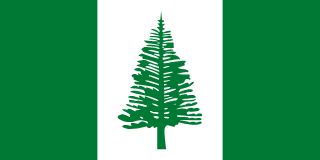Discover a detailed guide on the maritime aspects of Norfolk Island, a destination located in the South Pacific Ocean. Explore essential information for sailors and maritime professionals, including maritime geography, weather conditions, ports, marine wildlife, and local regulations. This guide will help you plan your maritime trips and operations safely and efficiently on this unique island.

Explore the strategic ports and maritime infrastructure of norfolk_island
Explore the strategic ports and maritime infrastructure of norfolk island
Norfolk Island is located in the South Pacific Ocean, about 1,412 kilometers east of Australia, between New Zealand and New Caledonia. This volcanic island of about 35 km² is surrounded by coral reefs that create specific maritime conditions to consider for navigation. The underwater topography around the island strongly influences the local currents and tides, which can be unpredictable. The prevailing winds are generally from east to southeast, which influences the maritime routes to and from the island. It is crucial for sailors to monitor local weather forecasts and marine reports before venturing into these waters, as tropical storms can occur seasonally, affecting safety at sea.
The waters around Norfolk Island are renowned for their marine biodiversity, home to many species of tropical fish, corals, and marine mammals. This ecological wealth sometimes imposes strict environmental restrictions for the protection of marine ecosystems, which sailors must respect.
Norfolk Island is equipped with a main port located in Kingston, serving as an entry point for goods and passengers. Although modest in size, the port is well-equipped to receive ferries, pleasure boats, and some cargo ships. The port infrastructure is adapted to local needs and strict port management for safety and environmental protection. Local maritime authorities impose strict regulations regarding navigation, mooring, fishing, and marine pollution. Commercial fishing is regulated to preserve marine resources and avoid overfishing.
For pleasure boaters, it is mandatory to comply with all local rules and obtain the necessary permits before docking in ports. Adherence to quarantine procedures and health measures related to imports is also strictly controlled. Due to its special status, it is recommended to consult specific maritime guides to Norfolk Island and contact port authorities for up-to-date information on navigation conditions and regulatory requirements.